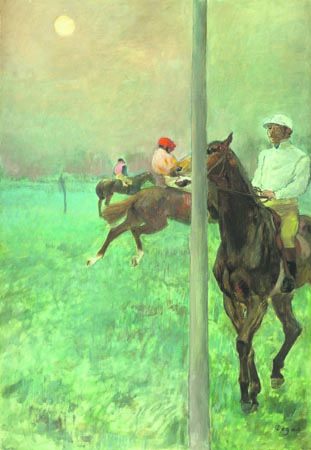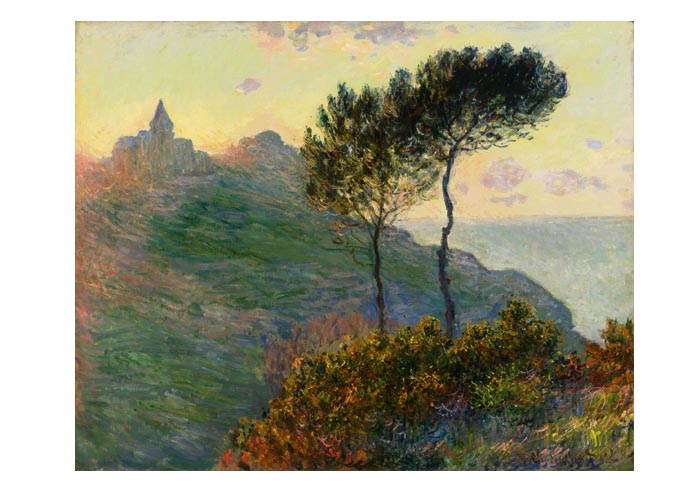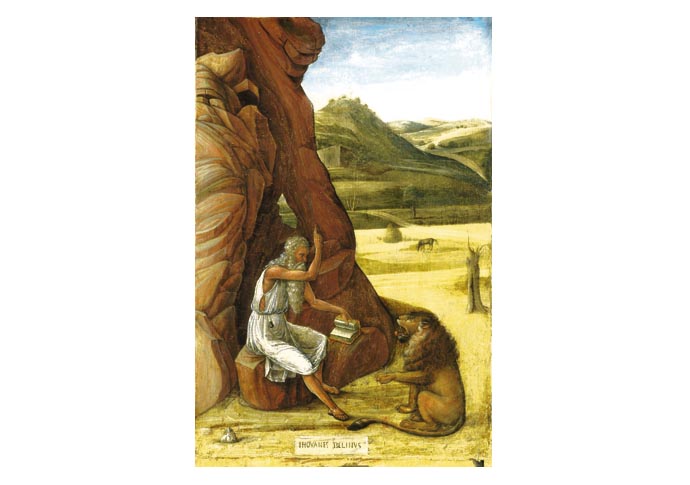Giovanni Bellini, St Jerome in the Wilderness, c. 1460, 44 x 29.9cm [The Henry Barber Trust, The Barber Institute of Fine Arts, University of Birmingham]
THE rabbit is a notable survivor and, by itself, worthy of a trip to the beautiful new exhibition at the Courtauld in Somerset House.
The touching depiction of this tiny creature nestles in the bottom left corner of an alluring painting, St Jerome in the Wilderness.
It’s by Giovanni Bellini (c1430-1516), egg tempera on wood, produced around 1440 to 1460.
The Courtauld experts note its importance as one of the earliest surviving works of the Venetian artist “…who would become a leading painter of the Renaissance”.
St Jerome is shown as scholarly hermit in the wilderness – though not here a desert – with his closest companion, a lion from whose paw he had removed a thorn.

Edgar Degas, Jockeys before the Race, 1878/9, 107 x 73cm [The Henry Barber Trust, The Barber Institute of Fine Arts, University of Birmingham]
And as the experts say: “Bellini was deeply innovative in his depiction of landscape, which he captured with a level of naturalism and detail that was unusual for the time.”
And Bellini’s St Jerome is not alone in being exceptional in this show, which brings together 18 masterpieces from the Barber Institute at Birmingham university, which is closed for major improvements and due to reopen some time next year.
There’s an special affinity between the Barber and the Courtauld, both dating from 1932 and both “…intended to encourage the study and public appreciation of art”.
The display at the Courtauld Gallery offers startling works ranging from the Bellini, through to the 20th century. Included in the selection are works by Claude, Degas, Gainsborough, Gossaert, Hals, Monet, Lautrec, Poussin, Reynolds, Rossetti, Rubens, Turner, Van Dyck, and Whistler.

Claude Monet, The Church at Varengeville, 1882, 65 x 81.3cm [The Henry Barber Trust, The Barber Institute of Fine Arts University of Birmingham]
There is, too, an oil Portrait of Countess Golovina by Élisabeth Vigée Le Brun (1755-1842). The artist, who fled revolutionary France in 1789, would become the first woman to gain honorary admission to the imperial academy of arts in Russia.
The Barber’s most recent acquisition, the 1913 Still Life in Grey by the German Expressionist Max Pechstein (1881-1955), can also be seen. It’s complex and intriguing with elements ranging from a carved stool from Cameroon, to oranges and lemons, and even a cauliflower!
Most of the works on loan can be found in a third-floor gallery at the Courtauld but others, including a large Joshua Reynolds double portrait can be seen within its permanent collection; also Anthony van Dyck’s Ecce Homo (c 1625-26), which hangs beside the Courtauld’s own, related, Man of Sorrows from around 1622-25.
• The Barber in London: Highlights from a Remarkable Collection, is at The Courtauld Gallery, Somerset House, Strand, WC2R 0RN till February 22 2026.
https://courtauld.ac.uk/
